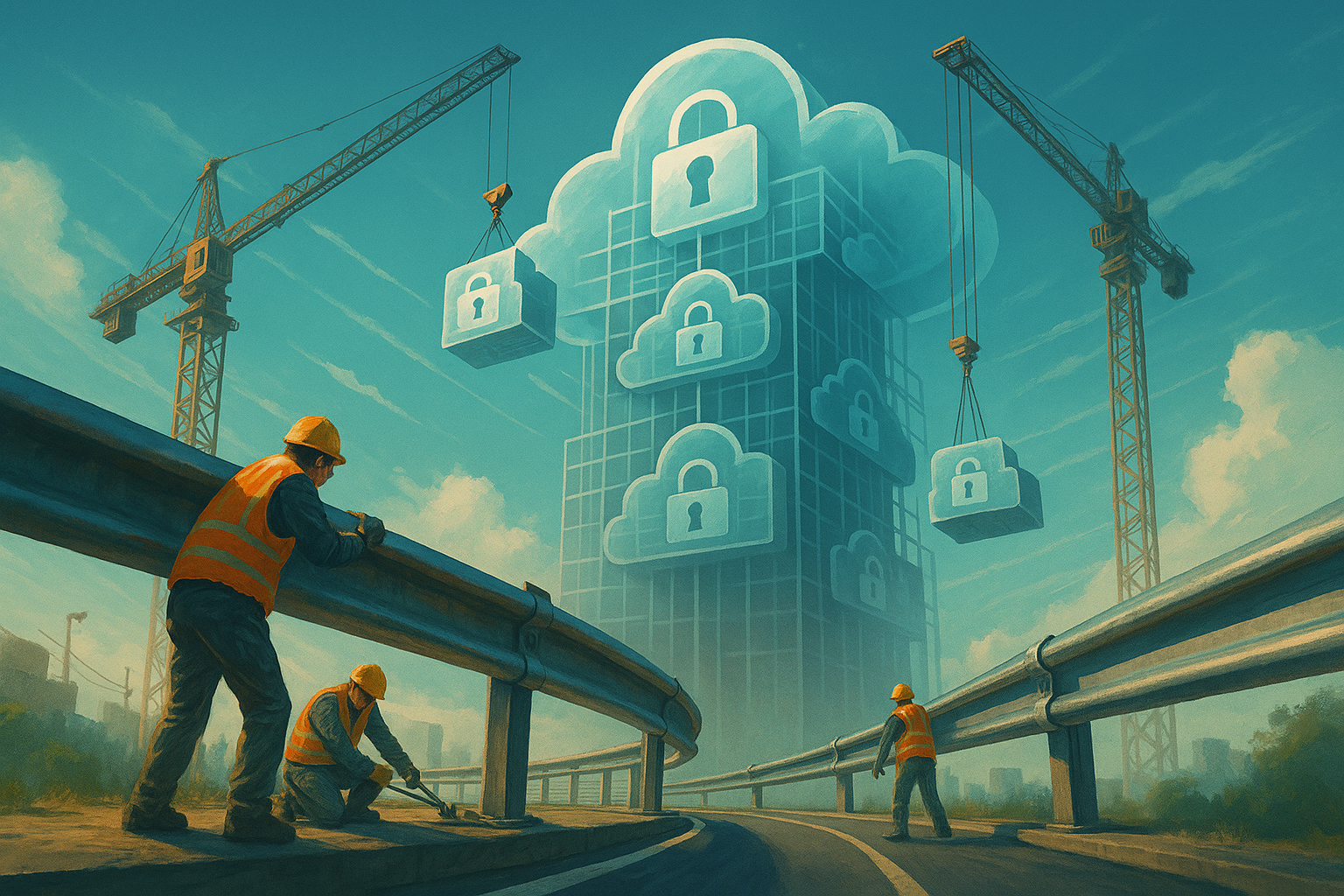Build Secure, Not Backward: Why Guardrails Must Lead Cloud Adoption
Organizations migrating to the cloud—particularly in federal and defense sectors—often carry forward more than just workloads. They bring legacy assumptions, outdated architectures, and operational debt accumulated over years of on-premise sprawl. In many cases, this baggage becomes a constraint on cloud design, forcing security postures and architectural decisions to bend around the limitations of older systems.
This is exactly the wrong approach.
If cloud adoption begins by diluting security guardrails to accommodate legacy systems, the result is a fractured environment where risk is absorbed instead of reduced. The entire purpose of moving to the cloud—scalability, agility, modernization—is undermined before it begins. Organizations end up replicating yesterday’s problems with today’s tooling, all under the illusion of progress.
The correct approach is the opposite: enforce strong guardrails from the start. Use the migration process as leverage to upgrade—not just infrastructure, but operational models, access controls, telemetry, and compliance. In short, use the cloud to reset and raise the bar—not to re-platform old risks.
Security Guardrails Aren’t Overhead—They’re Enablement
One of the most damaging misconceptions in early cloud programs is that security slows things down. Teams view hardened baselines, policy automation, or zero-trust enforcement as blockers to migration timelines. In response, decision-makers often loosen controls temporarily to “get things running,” with the intent to come back and tighten things later.
That rarely happens. What begins as a tactical exception quickly becomes an entrenched risk. Technical debt hardens. Teams build on insecure patterns. By the time the system is considered stable, the cost of refactoring outweighs the perceived benefit of correcting course.
What’s missed is that guardrails are not barriers—they are enablers. When built correctly, they provide a repeatable, trusted foundation that accelerates onboarding and simplifies compliance. Secure-by-default modules, pre-approved patterns, and centralized identity and logging frameworks reduce ambiguity and variance. They eliminate one-off design debates and the slow creep of configuration drift. In short, they make it easier to do the right thing and harder to do the wrong one.
In a cloud adoption scenario, that structure is invaluable. It turns migration into transformation.
Accommodating Legacy Systems Without Modernization is a Strategic Failure
There is a persistent pattern across large-scale migrations: security posture is compromised to maintain compatibility with legacy applications. This is most visible in areas like perimeter-based access models, static credential handling, unencrypted data flows, or hardcoded IP dependencies.
Rather than upgrade these systems, teams often replicate the environment required to support them—opening inbound traffic to support ancient protocols, duplicating firewall rules in the cloud, or disabling MFA on legacy endpoints.
While understandable in the short term, this tradeoff is rarely worth it. The result is a hybrid environment where the cloud loses its inherent advantages and instead becomes a high-cost virtualization platform with no meaningful security improvement.
This is not modernization. It’s inertia dressed in cloud credentials.
Instead, the migration process should trigger evaluation. If a workload cannot meet baseline guardrail requirements—zero trust access, role-based control, audit logging, hardened compute images—it should either be upgraded or isolated. Security controls should remain non-negotiable, not optimized away.
The migration isn't simply an opportunity to move workloads; it’s a chance to reassert what acceptable risk looks like.
Guardrails Drive Better Design by Default
By setting a high bar for security from the outset, teams are forced to think modularly, decouple components, and define clear boundaries. The friction that guardrails introduce early in a project—particularly in tightly controlled environments—is often what ensures sustainable, resilient architecture later on.
Consider a common pattern: requiring workloads to integrate with a central identity provider using SSO and short-lived credentials. At first, legacy apps break, developers groan, and timelines slip. But the enforcement drives change—authentication is refactored, session management improves, and telemetry becomes easier to correlate. The system becomes not only more secure, but also more observable and maintainable.
The same logic applies to encrypted transit requirements, container hardening baselines, or pipeline-integrated security testing. What appears burdensome during migration often becomes critical infrastructure for long-term resilience.
In this sense, guardrails are architectural gravity—they define what’s normal, permissible, and expected. Systems designed within them inherit that structure automatically. Systems that can’t comply are highlighted early, creating a clear decision point: upgrade, isolate, or retire.
Cloud is a Security Opportunity—Don’t Waste It
The cloud is not inherently more secure than legacy infrastructure. It simply offers more tools, abstractions, and automation to implement security well—if you choose to use them.
Treating security as a post-migration concern wastes that opportunity. Instead of reaping the benefits of fine-grained IAM, automated compliance enforcement, or immutable infrastructure, organizations recreate flat networks, overprivileged access, and brittle systems—now at a higher monthly cost.
This isn’t a tooling problem. It’s a strategy failure.
To avoid it, cloud adoption must begin with clear, enforced expectations: what controls must be in place, how data must be protected, how access must be governed. Those expectations should be baked into infrastructure templates, pipelines, and review gates—not buried in policy binders or left to individual interpretation.
And when legacy systems cannot meet those expectations, leadership must decide: are we here to replicate the past—or move beyond it?
Conclusion: Lead With Guardrails, Not Exceptions
Secure cloud adoption requires more than lift-and-shift. It requires a mindset shift. If your strategy begins with making the cloud accommodate outdated workloads instead of modernizing them to fit secure patterns, you’re designing for short-term convenience and long-term regret.
Start instead with clear, enforced guardrails that reflect modern security expectations. Let those guardrails shape migration decisions, architecture design, and compliance strategy. Use the cloud to push forward—not to rehost legacy risk.
Security isn’t what you add once everything is working. It’s what makes it work—reliably, repeatably, and resiliently.

